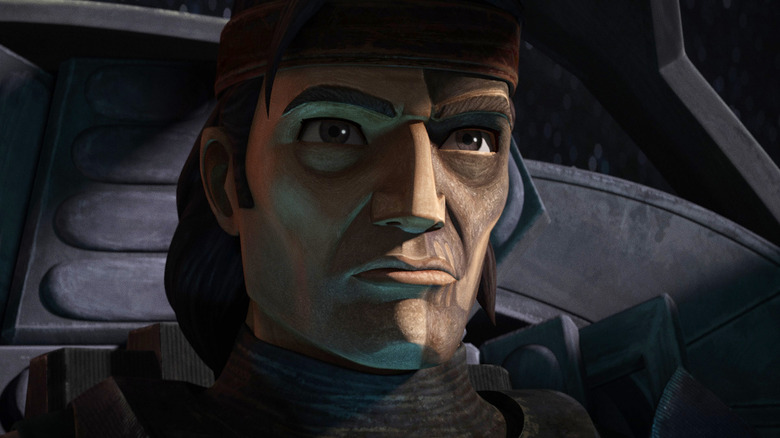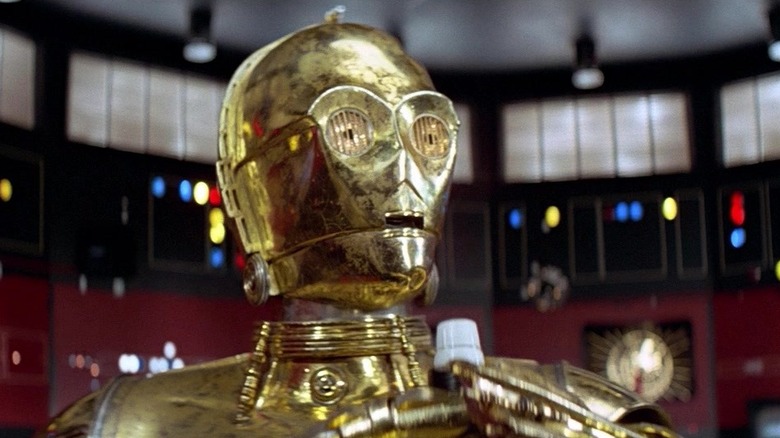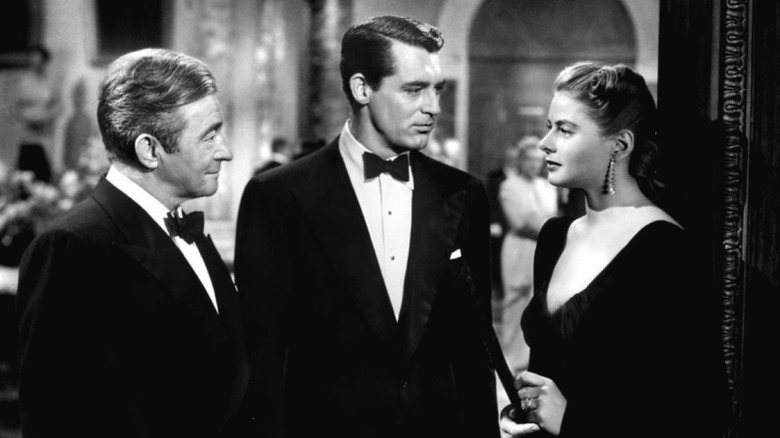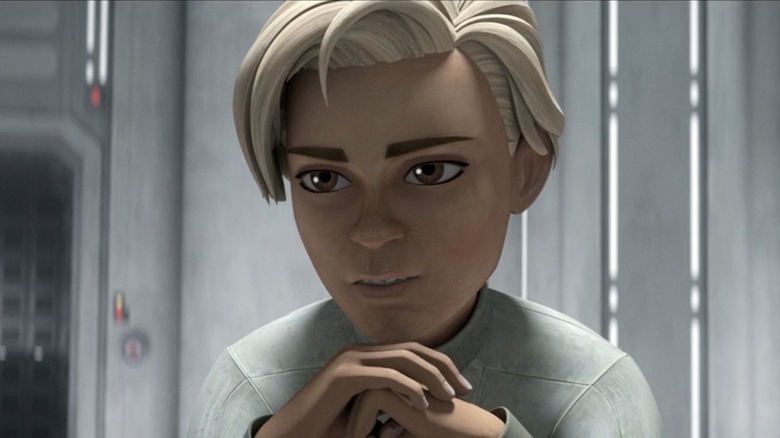Star Wars: The Bad Batch Season 3 Episode 13 Calls Back To Hitchcock Thrillers And Classic Cinema
This article contains spoilers for "Star Wars: The Bad Batch" season 3, episode 13, "Into the Breach."
From the very beginning, "Star Wars" has been a smorgasbord of film influences and references. George Lucas cited John Ford and Akira Kurosawa films as chief inspirations for "A New Hope." In fact, here at /Film (and StarWars.com before that), I've written hundreds of articles about the cinematic influences behind "Star Wars."
The latest episode of "The Bad Batch" is no exception. As the Bad Batch further pursues a path to the secret Imperial science facility on Mount Tantiss where Omega is being held, they lead a daring mission to an orbital platform at Coruscant to get the coordinates and affect their rescue. Meanwhile, Omega is held inside a child prison with other gifted kids who are being experimented on. Be that as it may, she knows her brothers are coming for her, and she needs to find a way for all of the captive kids to escape as well. As there are only two episodes left in the series after this, everything promises to build to an explosive finale and there is no indication how things will end.
One thing's for sure, though: the creatives behind "The Bad Batch" are fluent in classic film.
The classic trilogy influence
The latest episode of "The Bad Batch" pulls moves, sets, and situations from each film in the original "Star Wars" trilogy and it was great to see. The first thing comes from "Return of the Jedi," where a stolen Imperial shuttle and its codes are the key to getting the Rebels to the forest moon of Endor. Here, Echo gets a shuttle for the Bad Batch to infiltrate the orbital platform over Coruscant and, eventually, to Mount Tantiss. The tension in the scene about the codes vibes identically to the use in "Jedi."
Then, as they make their way into the station, they use Stormtrooper armor to make their way around — just like Han and Luke on the Death Star in "A New Hope" — until they find themselves inside a command station room that looks identical to the one Han and Luke find themselves in when R2-D2 discovers Princess Leia's whereabouts on the Death Star.
Finally, the entire episode hinges on the Bad Batch being able to pull off a move we first saw in "The Empire Strikes Back." They have to magnetize themselves to the hull of an Imperial ship that's about to jump to lightspeed, heading straight to Mt. Tantiss.
All of these thrilling moments arrive throughout the episode, and it's no wonder "Star Wars" would be the first source of inspiration for a "Star Wars" show. However, this only scratches the surface of classic films being referenced, intentionally or otherwise, in this episode of "The Bad Batch."
The classic film influences
This episode is really built on a lot of tension, so it's no wonder that the work of Alfred Hitchcock feels very present on the surface. There have been entire episodes of "The Clone Wars" based on Alfred Hitchcock films, most notably the episode "Senate Spy," which was a shockingly excellent version of "Notorious." And it was great to see some of the moves from "Notorious" on display here too, especially with the tension. There is an infamous sequence in "Notorious" where Ingrid Bergman's character is running interference so Cary Grant's character can get into a place where he's not supposed to be and the creatives behind this episode replicate that suspense perfectly. There's even an element of "The Shawshank Redemption" to the sequence; Omega is tasked with finding a way out of the prison and locating a passageway through her cell in a way that feels reminiscent of Andy Dufresene's famous escape.
Another key Hitchcock influence feels like it might have come from his underrated Cold War thriller, "Torn Curtain." It stars Paul Newman and Julie Andrews as they land behind enemy lines to extract information from a Russian mathematician. There is one scene in particular where they have to dispatch a Russian agent silently so that they're not discovered, and there are elements from this episode that bring that same level of tension and fear of discovery.
And finally, "The Guns of Navarone" feels like it has a place here as well. There are few war films that feature a better ticking clock than this one. Gregory Peck is dispatched with a team on an impossible mission to destroy two massive artillery cannons before a group of Allied ships make their way by the island. To fail is to allow every person on that boat to die. Success is measured in destruction. There's a similar timelock in this episode, wonderfully done, where Echo is forced to disable the proximity alarm on a shuttle. Failure means death to the Batch, success means they can find Omega.
Watching it play out is breathtaking.
The power of film
"Star Wars" is really a universe designed to explore the conventions of genres. It's always been a way to look at Westerns or samurai films through the lens of Buck Rogers — at the least, that was part of George Lucas's initial intent. Thanks to the animated shows, Lucas was able to stretch the definition of what genres "Star Wars" could find itself involved in. There are episodes of "The Clone Wars" that are essentially Hitchcock films, murder mysteries, or horror movies like "Alien" or "Predator." It's so thrilling to see "Star Wars" expand the possibilities of genre inside its universe and it's great to see the team behind "The Bad Batch" bringing that into this show as well, especially with everything they're able to accomplish in this episode in particular.
Episodes of the final season of "Star Wars: The Bad Batch" premiere on Wednesdays on Disney+.



